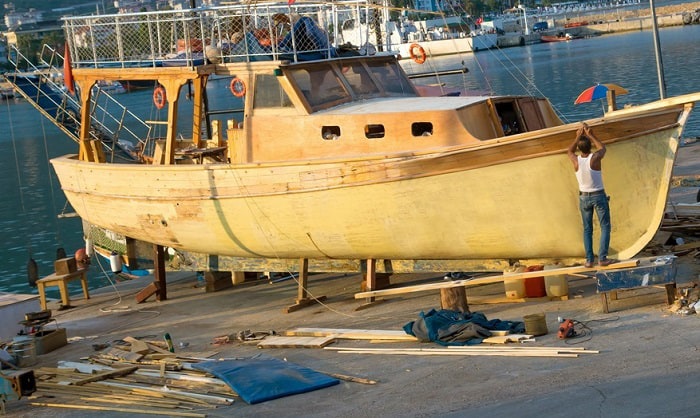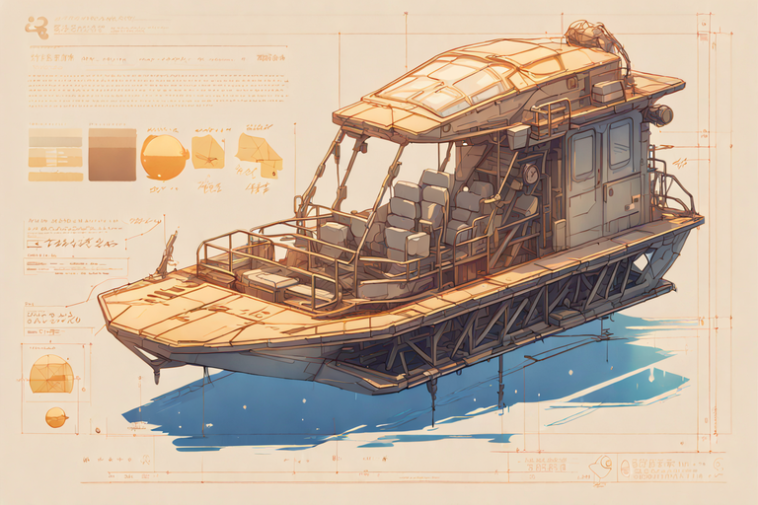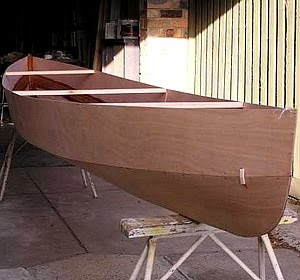Detailed Plywood Boat Plans for Flat-Bottom Boats
This document provides comprehensive plans for constructing a robust and seaworthy flat-bottom plywood boat. These plans are designed to be adaptable to various sizes, allowing for customization based on individual needs and skill levels. Careful attention to detail and adherence to the specified materials and techniques are crucial for ensuring a successful build and a safe boating experience.
I. Design Considerations and Specifications
A. Hull Design and Dimensions:
The flat-bottom design offers simplicity in construction and excellent stability in shallow waters. However, it's important to understand its limitations regarding speed and seaworthiness in rough conditions. This plan outlines a versatile 12-foot flat-bottom boat, but dimensions can be scaled proportionally. Key dimensions include:
- Length: 12 feet (3.66 meters)
- Beam (Width): 4 feet (1.22 meters)
- Depth: 12 inches (0.30 meters)
- Transom Height: 18 inches (0.46 meters)
These dimensions can be adjusted, but maintaining the appropriate length-to-beam ratio is vital for stability. Increasing the beam will enhance stability, but it will also increase the overall weight and drag. Reducing the beam will improve speed but compromise stability.
B. Material Selection:
The choice of plywood is critical for the longevity and durability of the boat. Marine-grade plywood is essential, specifically a type rated for exterior use and possessing a high degree of water resistance. Commonly used grades include: Exterior-grade plywood with a minimum of five layers. Using a higher-quality plywood with a waterproof glue will significantly extend the life of your boat.
Additional materials needed include:
- Epoxy resin and hardener: For bonding the plywood sheets and providing a waterproof seal.
- Fiberglass cloth: To reinforce the hull and provide added protection against water damage.
- Wood screws: Specifically designed for exterior use and capable of withstanding the stresses of water exposure.
- Wood filler: To smooth out any imperfections in the plywood seams.
- Paint: Marine-grade paint is necessary to provide a protective layer against UV rays and moisture.
- Hardware: This includes items like oarlocks, rowlocks, and any desired fittings.
C. Construction Methods:
The boat will be constructed using a stitch-and-glue method. This involves assembling the plywood panels using temporary stitching to hold them together, followed by applying epoxy resin and fiberglass cloth to create a strong and watertight bond. This method is relatively easy to learn and requires fewer specialized tools.
II. Detailed Construction Steps
A. Cutting the Plywood:
Precise cutting is crucial for a successful build. Use accurate measurements derived from the detailed plans (provided as separate drawings â€" refer to Appendix A) and employ a sharp saw, preferably a circular saw with a fine-tooth blade, or a jigsaw. Ensure all cuts are clean and square to minimize irregularities in the final assembly.
B. Stitch-and-Glue Assembly:
Once all the plywood pieces are cut, lay them out according to the provided plans. Use stainless steel wire or heavy-duty thread to stitch the pieces together, creating temporary seams. The stitches should be evenly spaced and tight enough to hold the pieces securely in place. Ensure the seams are properly aligned, paying close attention to the angles and curves.
C. Epoxy Application and Fiberglass Reinforcement:
After the stitching is complete, carefully apply epoxy resin and hardener to the seams, following the manufacturer's instructions. Work in manageable sections, ensuring complete saturation of the seams. Next, apply fiberglass cloth over the seams, embedding it into the wet epoxy. Use a roller or brush to remove air bubbles and ensure complete adhesion. Allow sufficient curing time before removing the stitches.
D. Finishing and Refinement:
After the epoxy has fully cured, remove the stitches and fill any gaps or imperfections with wood filler. Sand the surface smooth, using progressively finer grit sandpaper. Apply several coats of marine-grade primer and then the final coat of marine paint. This will provide protection against water and UV damage.
E. Hardware Installation:
Once the paint has completely dried, install the necessary hardware, including oarlocks, rowlocks, and any other desired fittings. Ensure all hardware is securely fastened and properly aligned.
III. Safety Precautions and Considerations
Always prioritize safety. Wear appropriate safety gear, including eye protection, gloves, and a respirator when working with epoxy resin and fiberglass cloth. Epoxy resin can be irritating to the skin and respiratory system. Work in a well-ventilated area and follow the manufacturer's safety instructions carefully.
Prior to launching the boat, conduct a thorough inspection to ensure all seams are watertight and the hardware is securely fastened. Test the boat in calm waters before venturing into more challenging conditions. Never overload the boat, and always wear a personal flotation device (PFD).
IV. Appendix A: Detailed Drawings
(This section would include detailed scale drawings of each component of the boat, such as the hull sides, bottom, transom, and any other necessary parts. These drawings should be provided as separate files due to the complexity and detail required. These drawings should show precise dimensions and cutting lines for each part.)
V. Conclusion
Building a plywood flat-bottom boat can be a rewarding and fulfilling project. By carefully following these plans and paying close attention to detail, you can construct a safe and durable boat suitable for various recreational purposes. Remember to prioritize safety throughout the construction and use processes. Enjoy your new boat!














